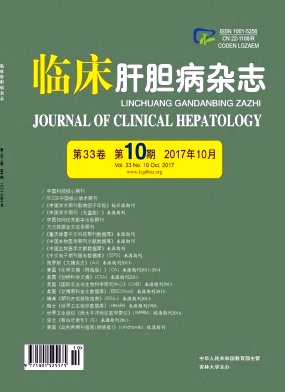Objective To investigate the interaction between autophagy and lipid metabolism in nonalcoholic fatty liver disease ( NAFLD) .Methods Human hepatocytes ( steatosis) were cultured in vitro to establish a cell model of NAFLD. Rapamycin was used to induce autophagy and 3-methyladenine was used to inhibit autophagy. MTT colorimetry was used to measure cell viability. ELISA was used to measure the levels of triglyceride ( TG) , alanine aminotransferase ( ALT) , aspartate aminotransferase ( AST) , lactate dehydrogenase ( LDH) , gamma-glutamyl transpeptidase ( GGT) , and albumin ( Alb) . IF method was used to determine the location and distribution of LC3-II. Western blot was used to measure LC3-II/LC3-I ratio. An analysis of variance was used for comparison of continuous data between groups, and the SNK-q test was used for further comparison between two groups. Results Compared with the steatosis group, the induced autophagy group had significant reductions in absorbance and cell viability ( HL-7702 cells: q = 4. 160 and 4. 110, P < 0. 05; SK-HEP-1 cells: q = 4. 407 and 4. 032, P < 0. 05) . Compared with the control group, the steatosis group had significant increases in the levels of TG, ALT, AST, LDH, GGT, and Alb ( HL-7702 cells: q = 5. 316, 3. 730, 4. 013, 6. 967, 6. 192, and 5. 531, P < 0. 05; SK-HEP-1 cells: q = 4. 963, 3. 603, 4. 774, 7. 479, 6. 319, and 5. 193, P < 0. 05) . Compared with the steatosis group, the induced autophagy group had significant reductions in the levels of TG, ALT, AST, LDH, GGT, and Alb ( HL-7702 cells: q = 4. 978, 3. 695, 3. 960, 5. 130, 4. 695, and 3. 192, P < 0. 05; SK-HEP-1 cells: q = 3. 846, 5. 575, 4. 184, 5. 019, 4. 203, 3. 049, P < 0. 05) . The induced autophagy group had the highest percentage of LC3-II-positive HL-7702 cells ( 90. 1%) and LC3-II-positive SK-HEP-1 cells ( 80. 0%) , followed by the steatosis group ( 47. 2% LC3-II-positive HL-7702 cells and 48. 4% LC3-II-positive SK-HEP-1 cells) and the autophagy inhibition group ( 30. 2% LC3-II-positive HL-7702 cells and 45. 5% LC3-II-positive SK-HEP-1 cells) . The induced autophagy group had a significant increase in LC3-II/IC3-I ratio compared with the steatosis group ( HL-7702 cells: q = 6. 786, P < 0. 05;SK-HEP-1 cells: q = 5. 926, P < 0. 05) . Conclusion Upregulation of autophagy can promote the elimination of liver fat, while downregulation of autophagy can promote lipid accumulation.







 DownLoad:
DownLoad: